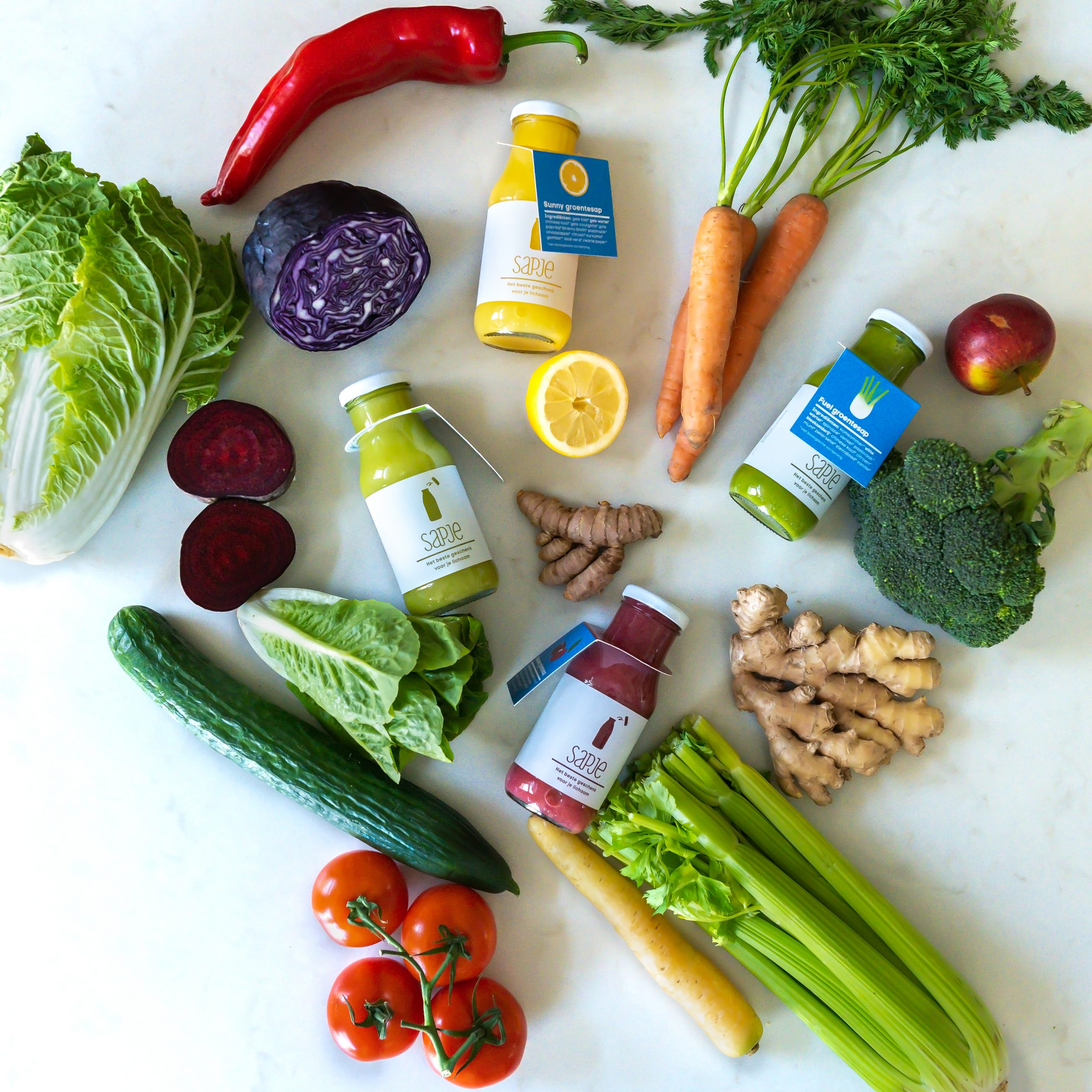Spring has started, which means there are plenty of delicious and healthy vegetables in season. This is the perfect time to experiment with different types of vegetables and perhaps discover new ones! Below, we list our favorite spring vegetables and explain how they can support your health.
All vegetables are healthy, but each type contains a different combination of nutrients. By alternating between different types of vegetables, you ensure that you get a good amount of all the vitamins and minerals that vegetables have to offer. Choosing seasonal vegetables more often can help with this. In addition, vegetables that are in season are often more sustainable and cheaper than other vegetables. And as a bonus, when vegetables are in season, their taste is at its best!
1: Asparagus
Spring is the season of asparagus. This unique vegetable, also known as the “white gold,” has a soft but distinct flavor. Because white asparagus grows underground, in the dark, it maintains its beautiful white color. With the green variety, it works the opposite way. They grow above ground and owe their color to the sunlight shining on them. Green asparagus has a slightly stronger taste than white asparagus and does not need to be peeled like white asparagus.
Both white and green asparagus are rich in vitamin C. This vitamin is involved in many different important functions in your body. For example, vitamin C has a positive influence on your immune system and contributes to the formation of collagen, which is important for your bones and skin. Vitamin C also functions as an antioxidant, helping to protect your healthy cells and tissues against the effects of UV radiation and air pollution. Green asparagus is also a good source of vitamin B1, which is good for your heart and nervous system, among other things.

2: Rhubarb
Rhubarb is also a true spring vegetable. The rhubarb season runs from the end of March to July, with May as its peak month. The rhubarb plant is a beautiful sight with its stunning green-red stalks and large dark green leaves. Rhubarb has a tart taste and is often used in sweet dishes, which is why it is often mistakenly seen as a fruit.
Rhubarb is a good source of fiber and is packed with vitamin K and the mineral potassium. Vitamin K is important for maintaining strong bones and helps with the normal clotting of your blood. Potassium is beneficial for your blood pressure and supports the normal functioning of your muscles and nervous system.
However, be aware that only the stalks of the rhubarb are edible. The leaves contain oxalic acid, which is toxic to humans.
3: Tomatoes
Tomatoes are considered a seasonal product from April onwards. This juicy red fruit vegetable comes in many different varieties and sizes. Tomatoes have a deliciously fresh and sweet taste and are incredibly versatile. It’s no wonder that tomatoes top the list of most consumed vegetables in the Netherlands (1).
Tomatoes are a good source of vitamin C. With its antioxidant function, this vitamin helps protect healthy cells and tissues. Vitamin C also contributes to the normal functioning of your immune system and stimulates the absorption of iron from your diet.
4: Spring onion
The spring onion is aptly named, as this young, immature onion is harvested early in the season. Spring onions have a mild flavor that is reminiscent of leeks. You can slice the green stems of the spring onion into rings and eat them raw, for example in salads, or use them in warm dishes, such as sauces or soups.
You can easily regrow spring onions yourself by cutting off the bottom with the roots of a spring onion (about 5 cm), and then placing it upright in a container of water. Leave it in a sunny spot and within a few days, a new bunch of crisp spring onions will sprout!
Spring onions are rich in vitamin K. With just 36 grams of this vegetable, you already meet the recommended daily intake of 70 µg of vitamin K.
5: Broccoli
Broccoli is a type of cabbage that is available from May onwards. You can recognize it by its green flower buds and thick stems. Broccoli has a crunchy texture and a mild, slightly sweet and earthy flavor. Broccoli is packed with healthy nutrients. It contains a lot of fiber and is rich in vitamins B11 (folate), C, and K. Vitamin B11 contributes, among other things, to extra energy when you’re tired and helps with the normal functioning of your immune system. In addition, vitamin B11 is especially important during pregnancy because it supports the growth of the unborn child.

6: Celery
Celery is in season from mid-May. The crunchy stalks of this popular vegetable have a fresh, herbaceous taste. With celery, you can go in any direction. It is great in stews and sauces, but also a delicious addition to salads and, not to forget: You can also make delicious celery juice out of it!
Celery provides you with a lot of beta-carotene, which can be converted to vitamin A in your body. This is an important nutrient that is good for your vision, immune system, and skin. In addition, celery is rich in vitamins C and K, and contains a good amount of the mineral potassium.
Spring vegetables in our juices
You can also find a lot of these spring vegetables in our juices, shots, and soups. For example, our refreshing Hydrate juice contains rhubarb and our Support and Fuel juices are packed with celery. Tomatoes are, of course, an essential ingredient in our tomato juice and tomato soup! Broccoli, on the other hand, can be found in our Detox juice.

Sources:
Voedingscentrum (year unknown), Groentes. Retrieved on April 5, 2023. https://www.voedingscentrum.nl/encyclopedie/groente.aspx

